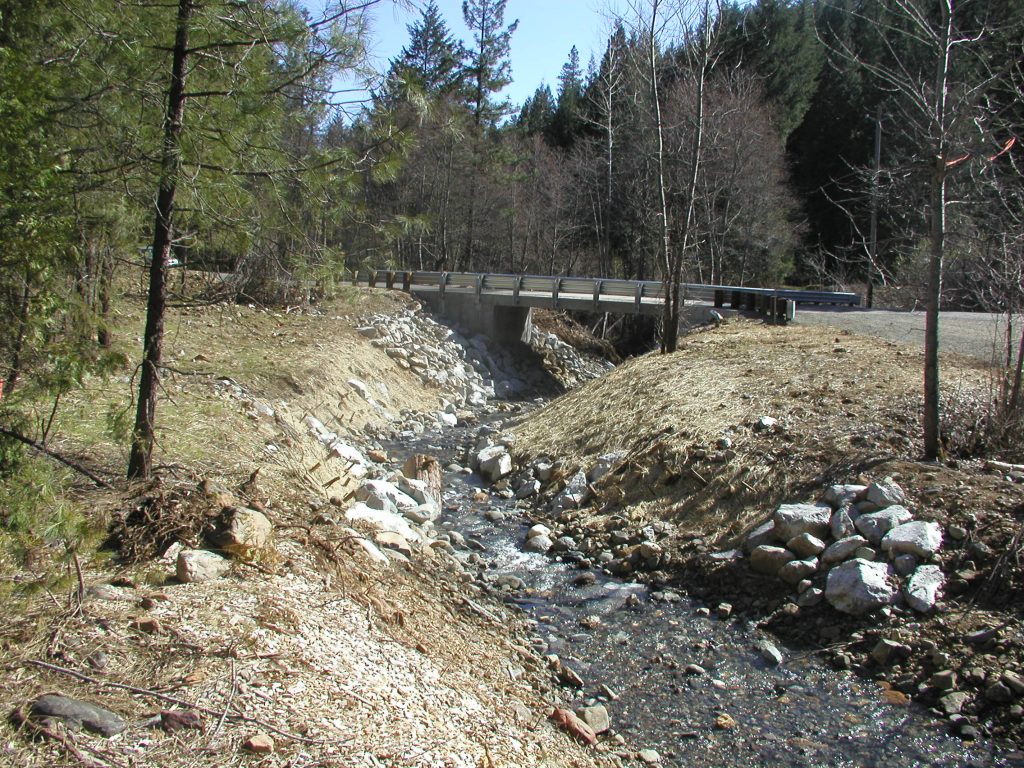REASON FOR ACTION
What does watershed land use have to do with salmon and steelhead? Fine sediment (sand and silt) delivery from tributary watersheds to the Trinity River increases with roads, logging, and other land uses. These fine sediments accumulate in the Trinity River, and pose a severe threat to the survival and development of salmon and steelhead eggs. By improving land use practices and removing unused logging roads, fine sediment supply to the Trinity River decreases, which increases salmon and steelhead production.
Tributaries also provide important habitats for juvenile fish and for other aquatic wildlife.
TRRP WATERSHED PROJECTS
Watershed restoration actions include road maintenance, road rehabilitation and road decommissioning on private and public lands within the Trinity River basin below Lewiston Dam, including the South Fork Trinity River basin. Approximately 80 percent of the lands within the Trinity basin are federally managed of which the USDA Forest Service administers approximately 95 percent and the Bureau of Land Management administers five percent. Of the remaining 20 percent privately-owned land in the basin, approximately half (10 percent of the total) are industrial timberlands, with the remainder being small private holdings. This land ownership mix provides good opportunities to improve watersheds that affect the Trinity River and its fisheries.
RESTORATION PAGES
Science and Adaptive Management

